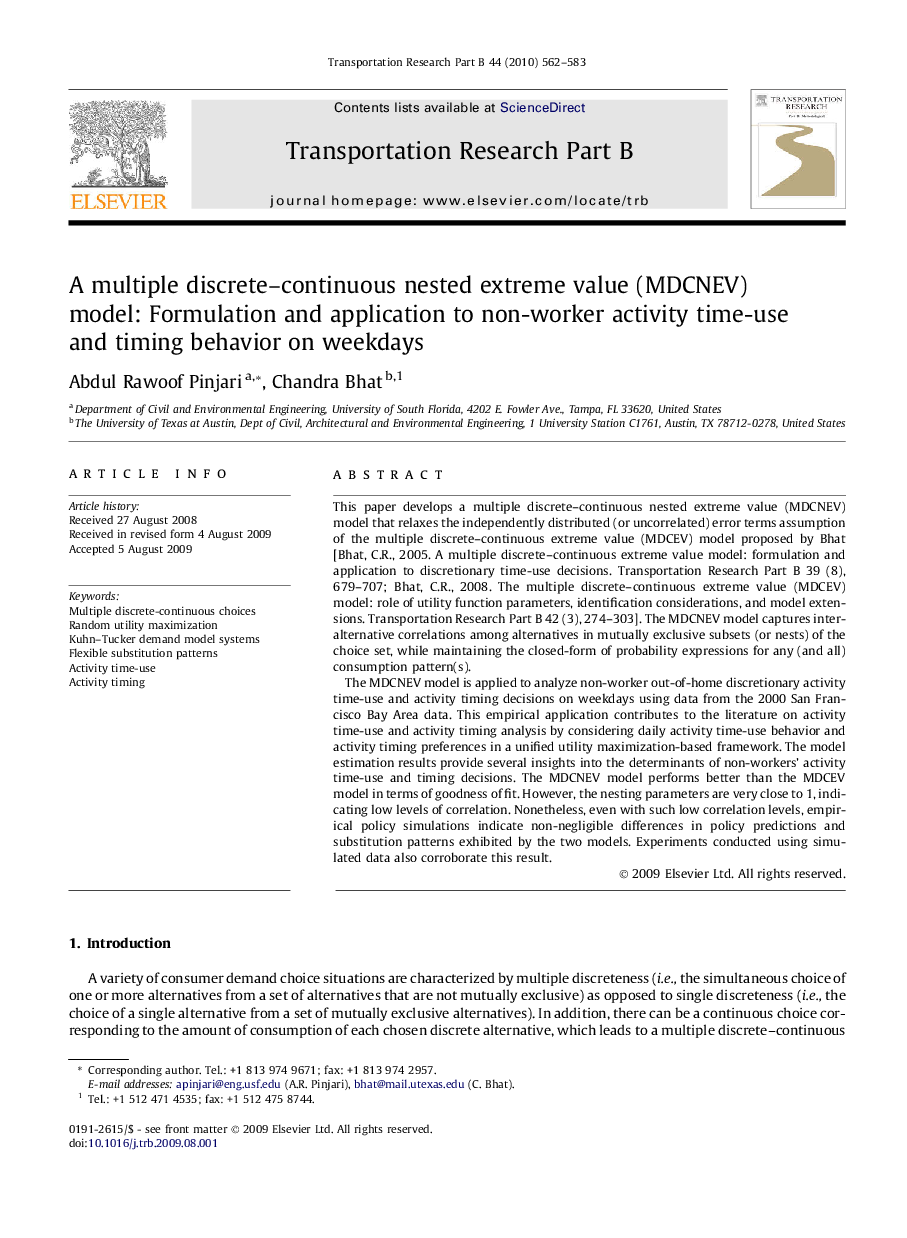| کد مقاله | کد نشریه | سال انتشار | مقاله انگلیسی | نسخه تمام متن |
|---|---|---|---|---|
| 1132422 | 955777 | 2010 | 22 صفحه PDF | دانلود رایگان |

This paper develops a multiple discrete–continuous nested extreme value (MDCNEV) model that relaxes the independently distributed (or uncorrelated) error terms assumption of the multiple discrete–continuous extreme value (MDCEV) model proposed by Bhat [Bhat, C.R., 2005. A multiple discrete–continuous extreme value model: formulation and application to discretionary time-use decisions. Transportation Research Part B 39 (8), 679–707; Bhat, C.R., 2008. The multiple discrete–continuous extreme value (MDCEV) model: role of utility function parameters, identification considerations, and model extensions. Transportation Research Part B 42 (3), 274–303]. The MDCNEV model captures inter-alternative correlations among alternatives in mutually exclusive subsets (or nests) of the choice set, while maintaining the closed-form of probability expressions for any (and all) consumption pattern(s).The MDCNEV model is applied to analyze non-worker out-of-home discretionary activity time-use and activity timing decisions on weekdays using data from the 2000 San Francisco Bay Area data. This empirical application contributes to the literature on activity time-use and activity timing analysis by considering daily activity time-use behavior and activity timing preferences in a unified utility maximization-based framework. The model estimation results provide several insights into the determinants of non-workers’ activity time-use and timing decisions. The MDCNEV model performs better than the MDCEV model in terms of goodness of fit. However, the nesting parameters are very close to 1, indicating low levels of correlation. Nonetheless, even with such low correlation levels, empirical policy simulations indicate non-negligible differences in policy predictions and substitution patterns exhibited by the two models. Experiments conducted using simulated data also corroborate this result.
Journal: Transportation Research Part B: Methodological - Volume 44, Issue 4, May 2010, Pages 562–583